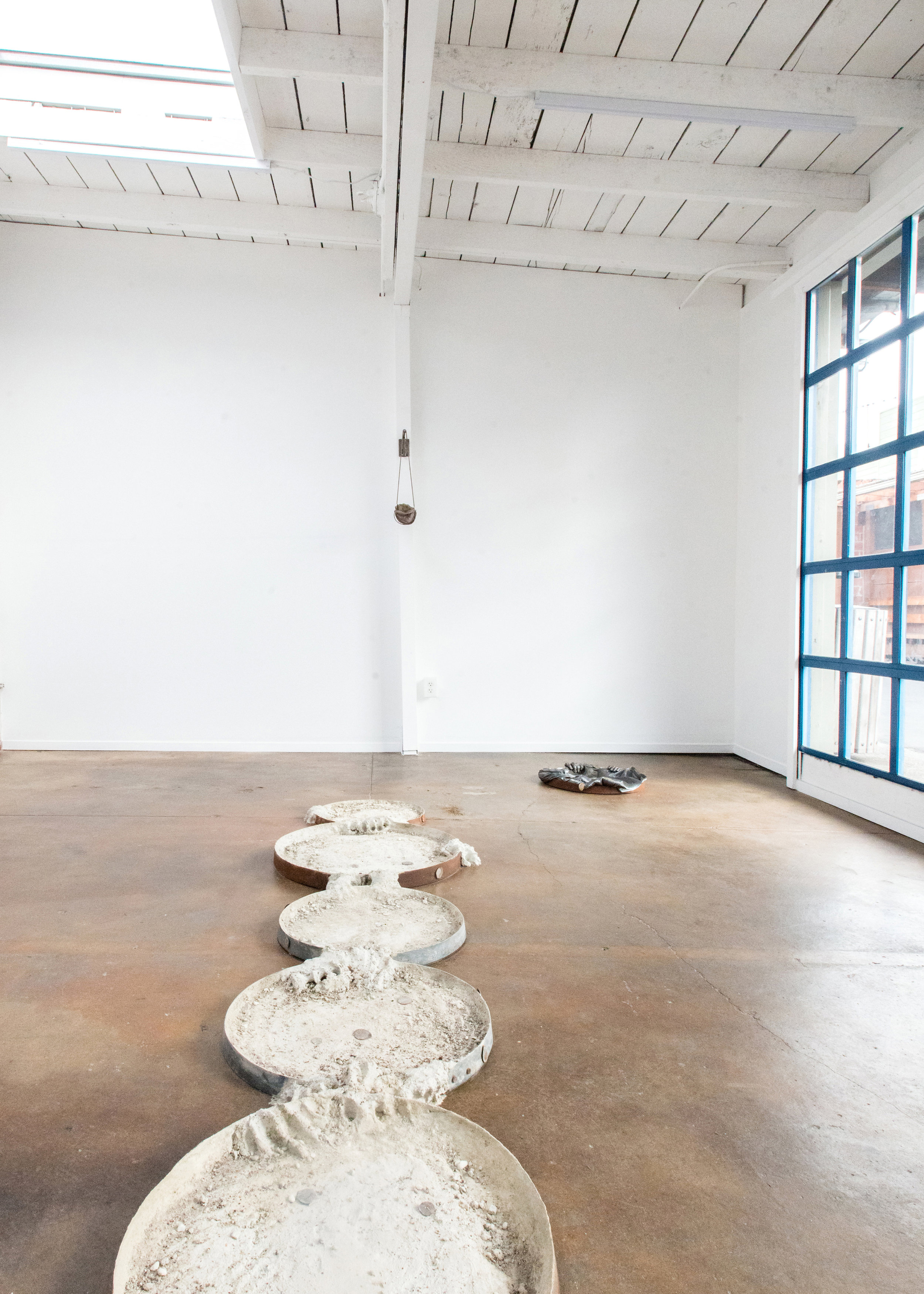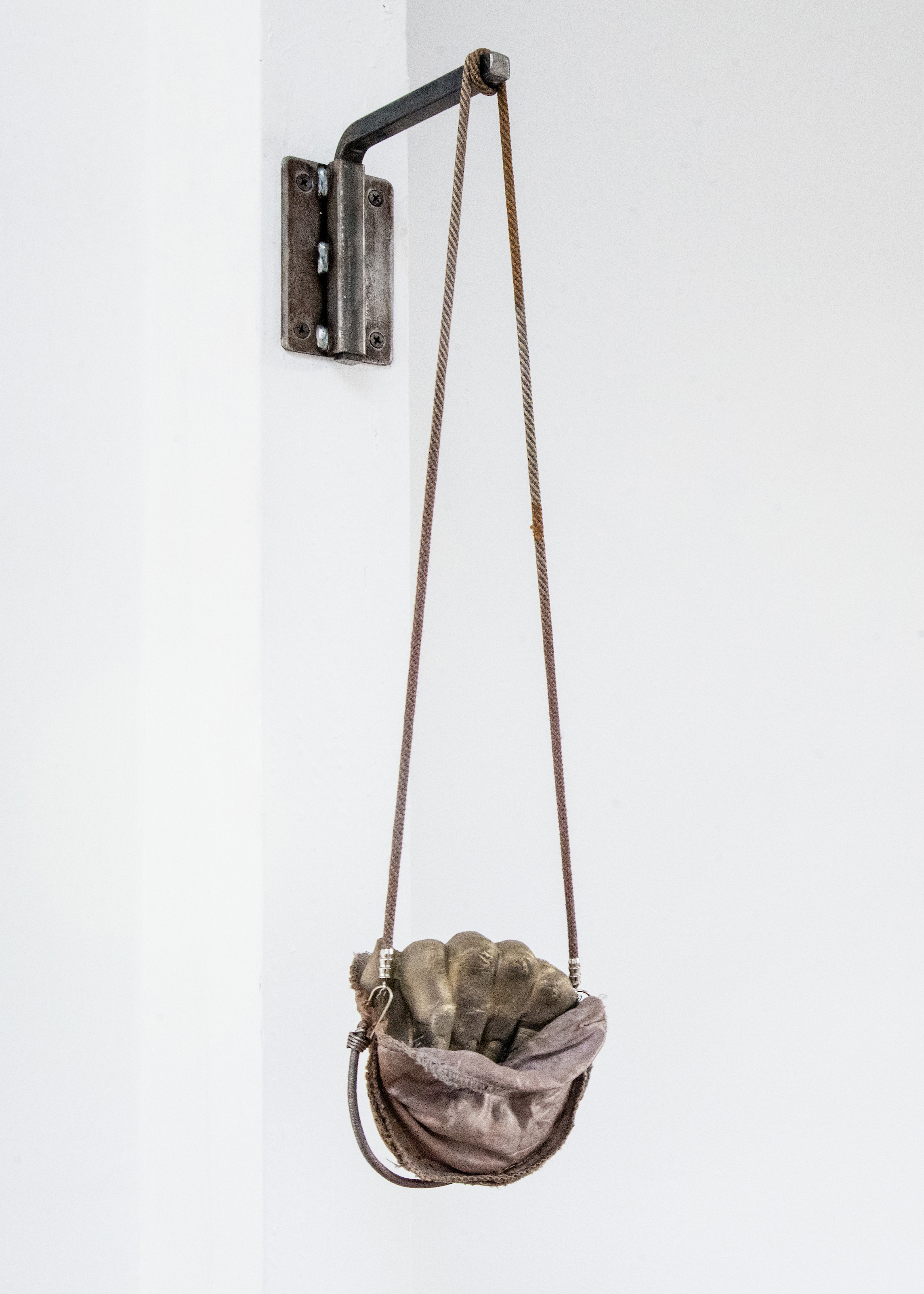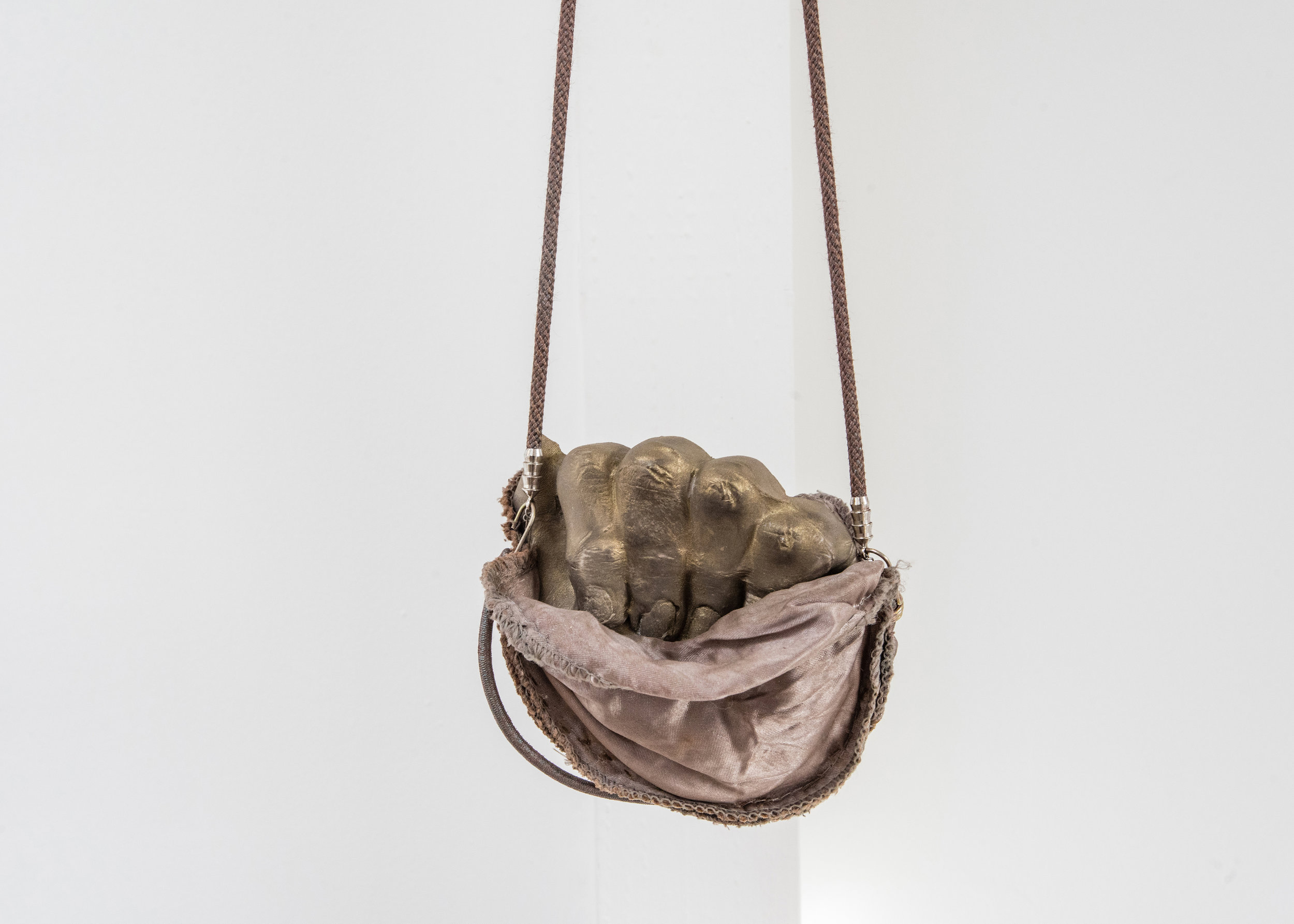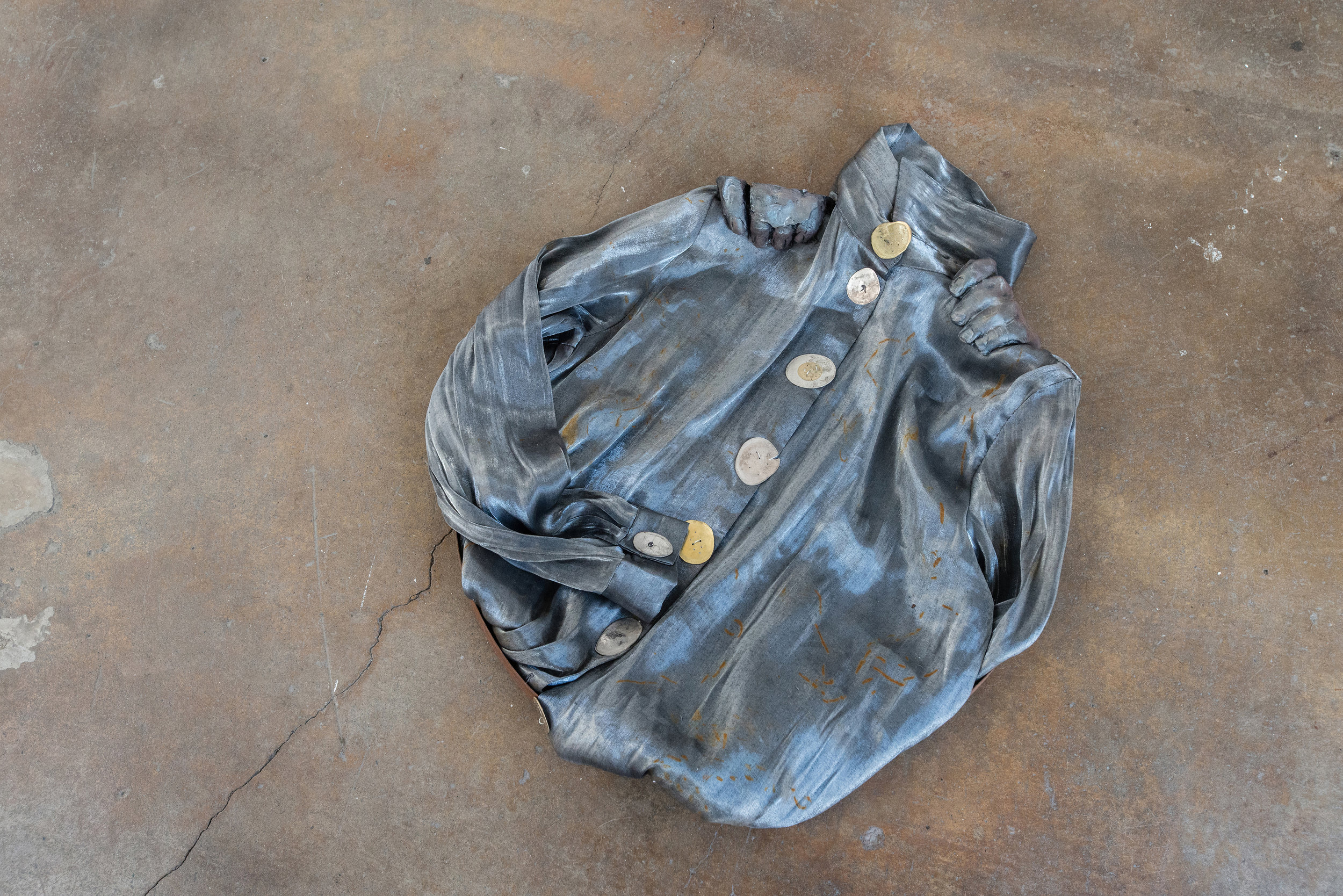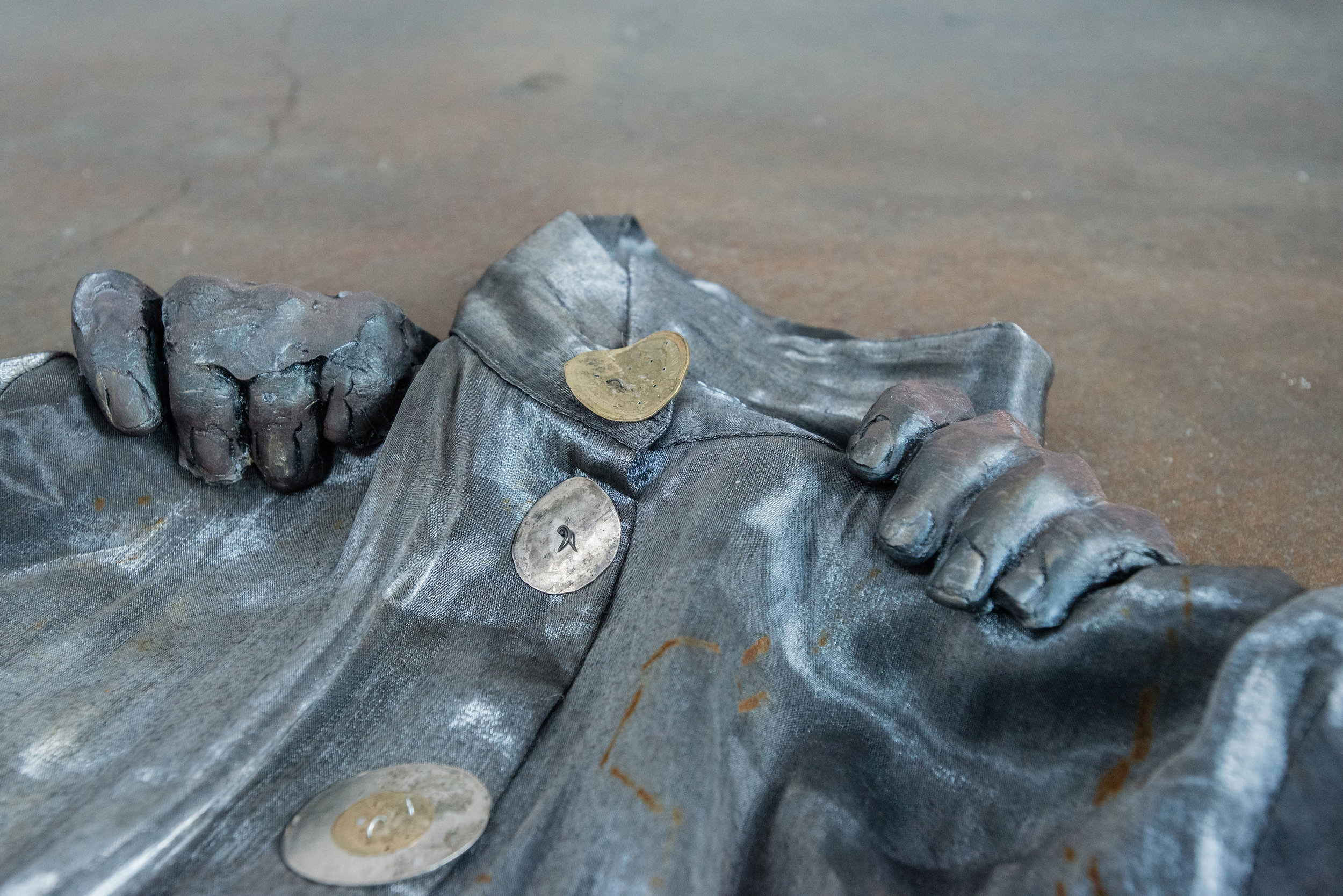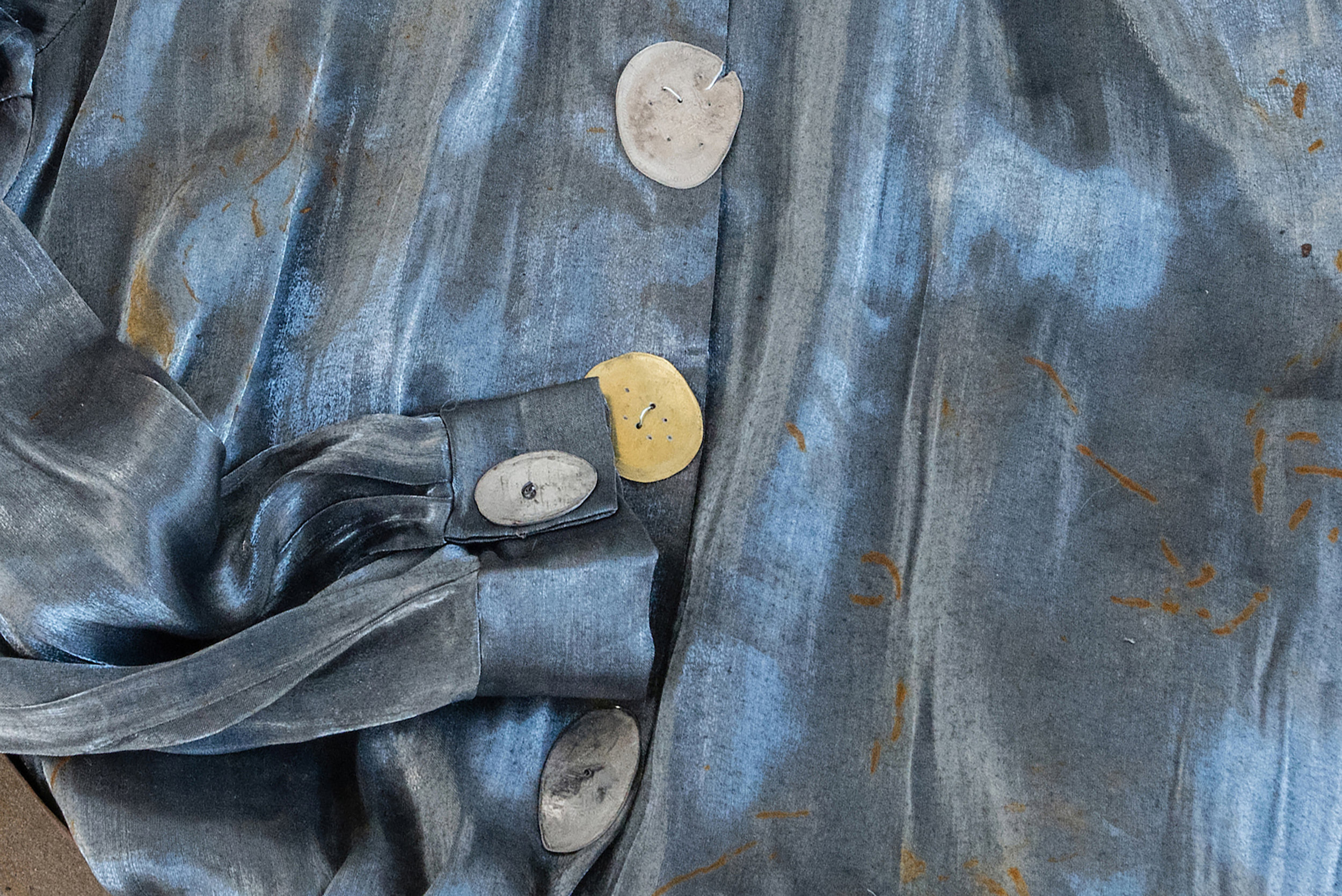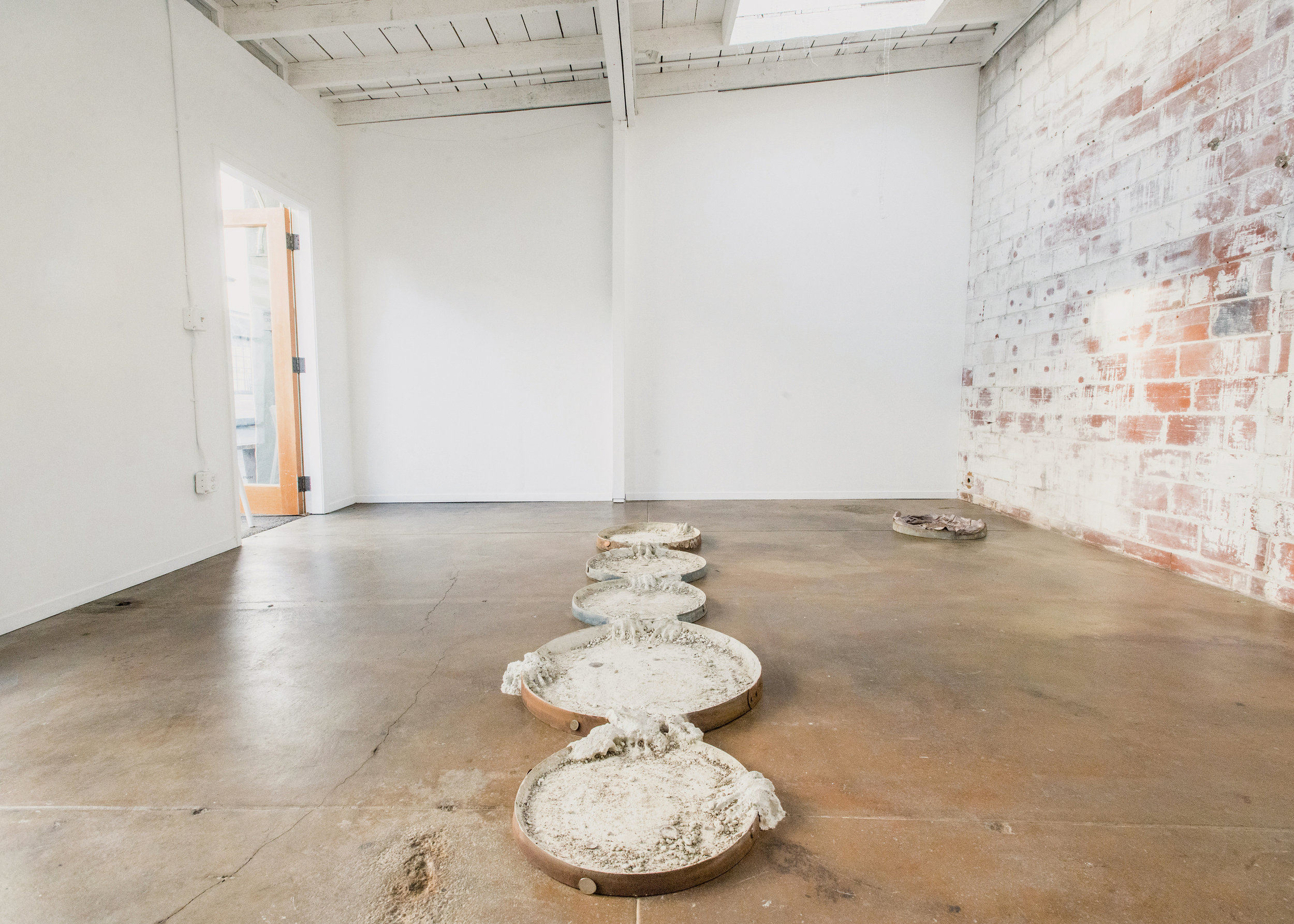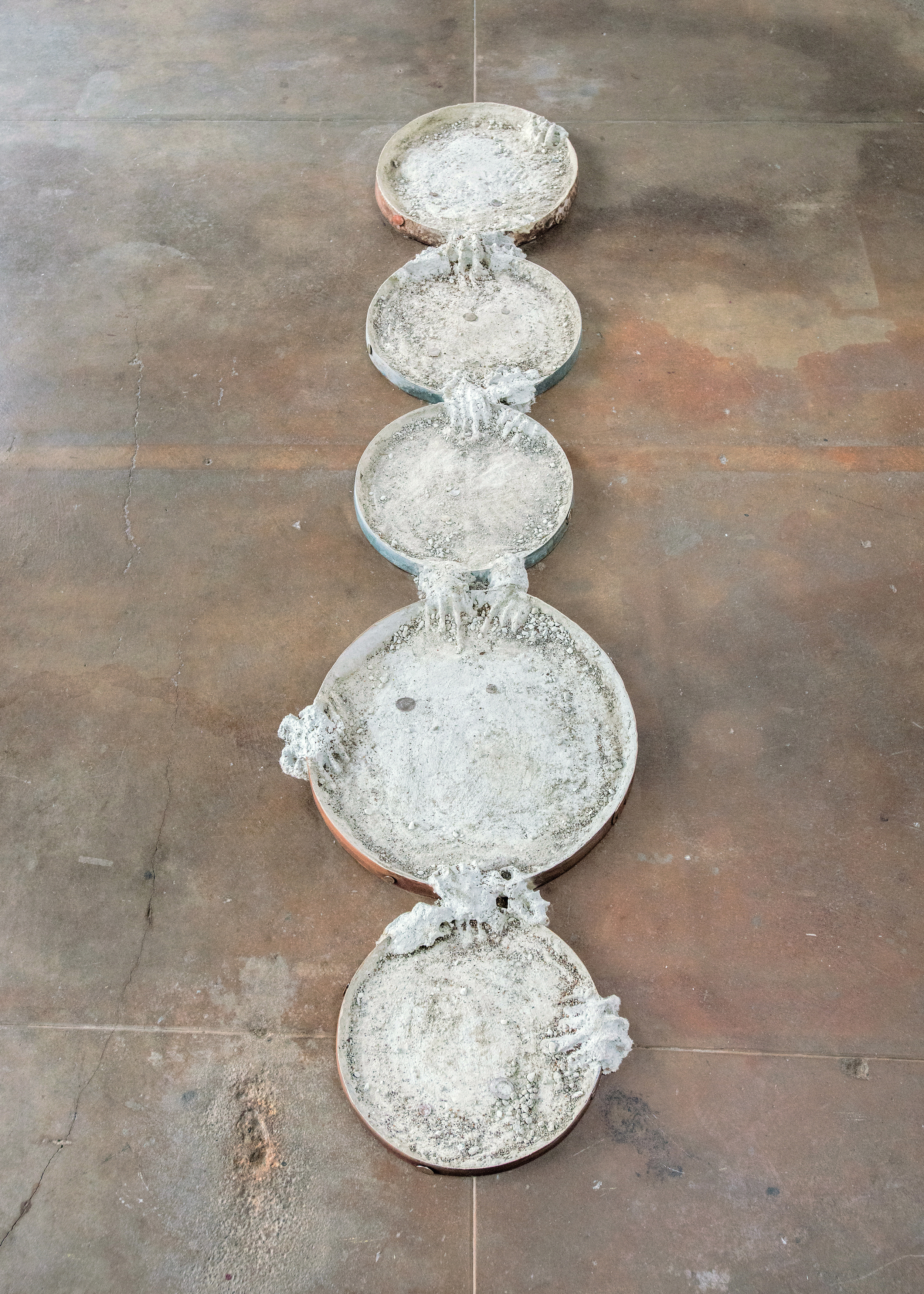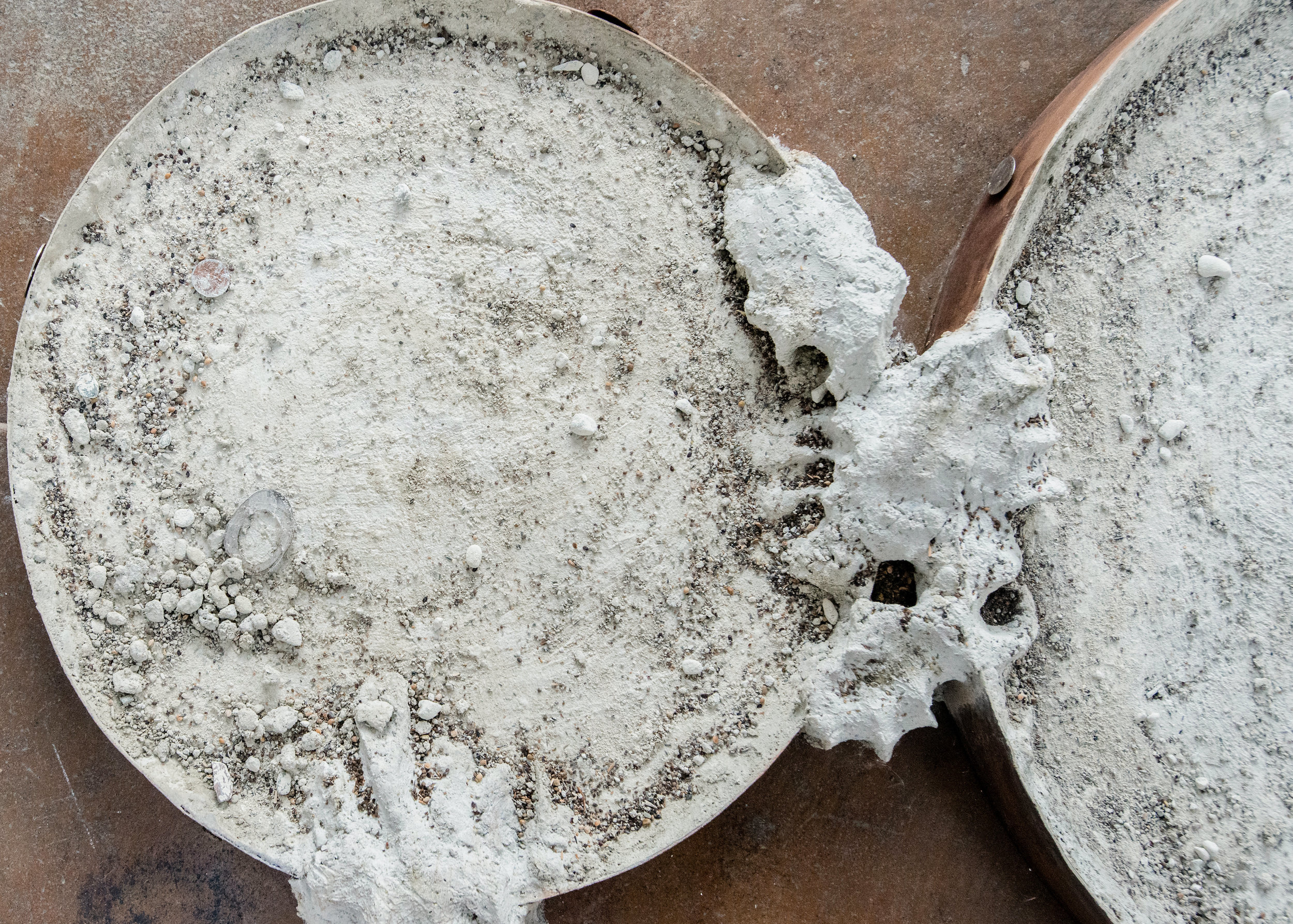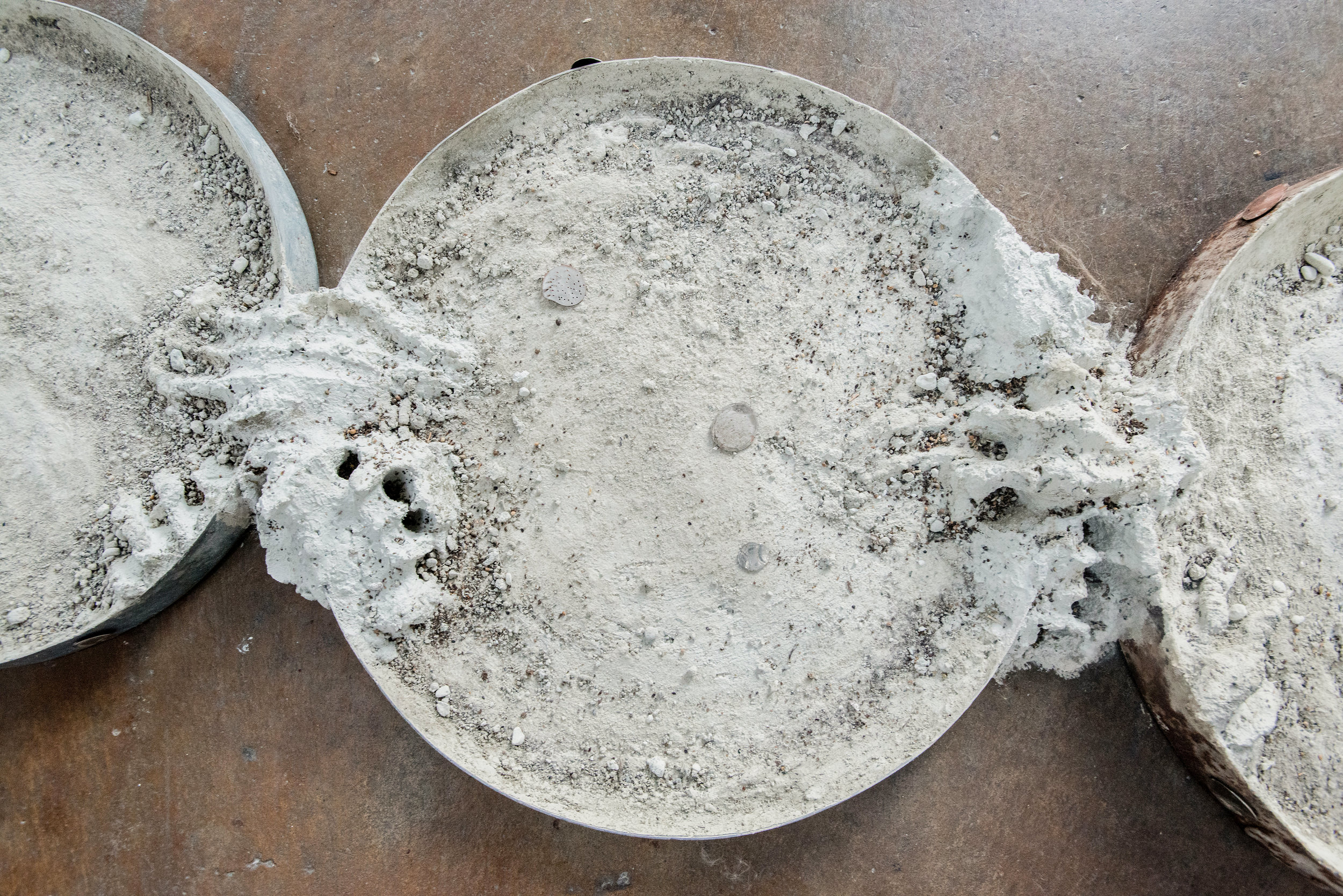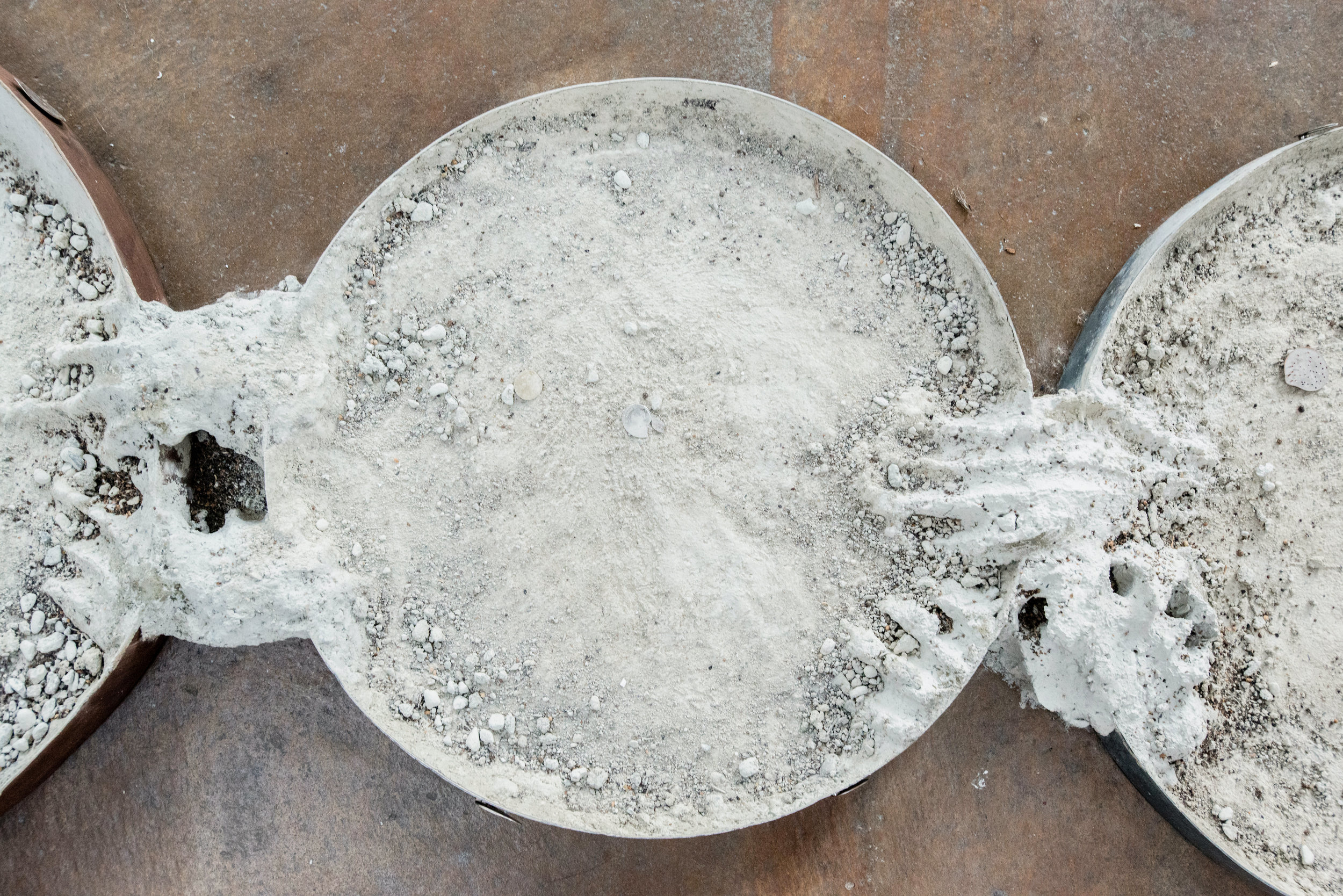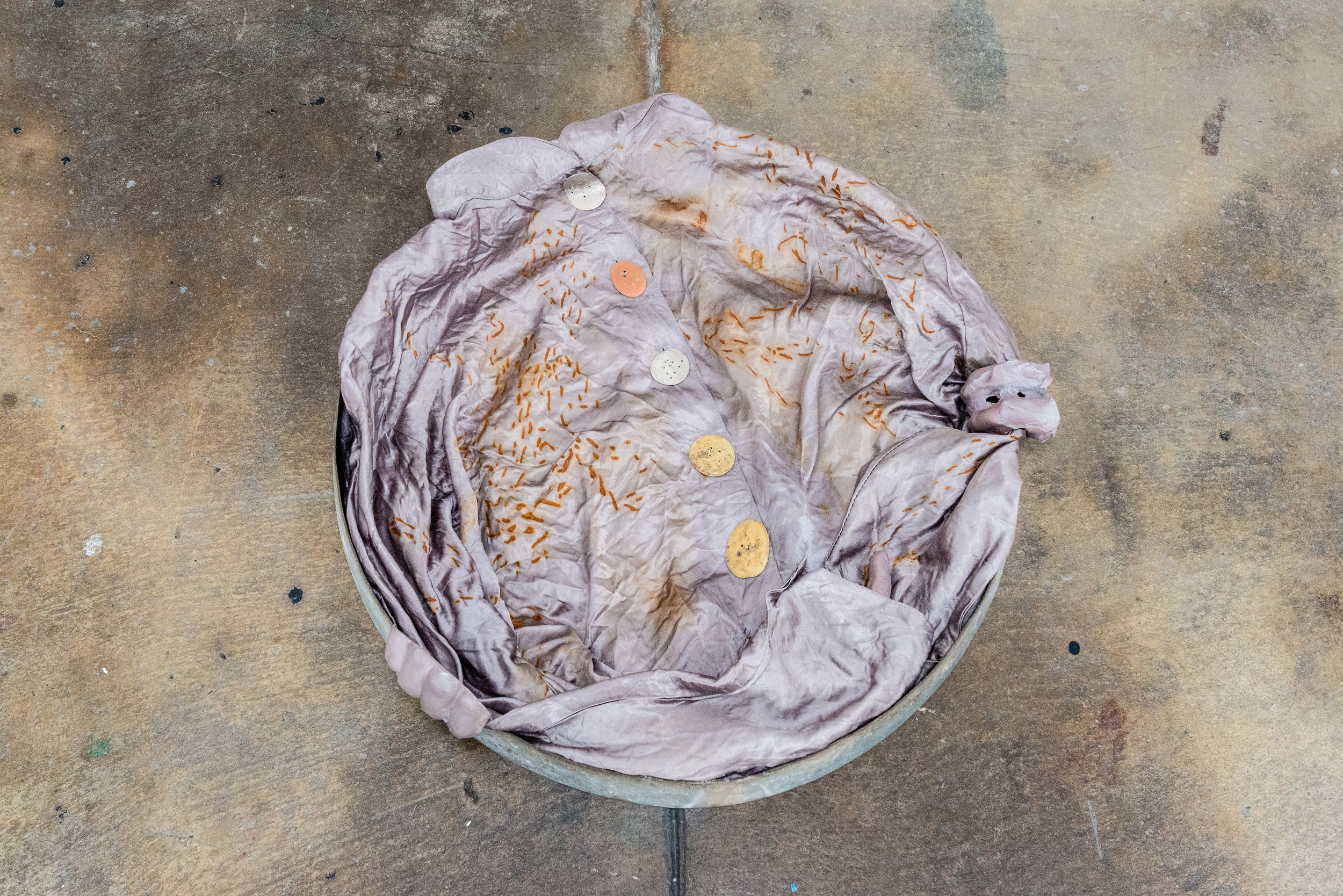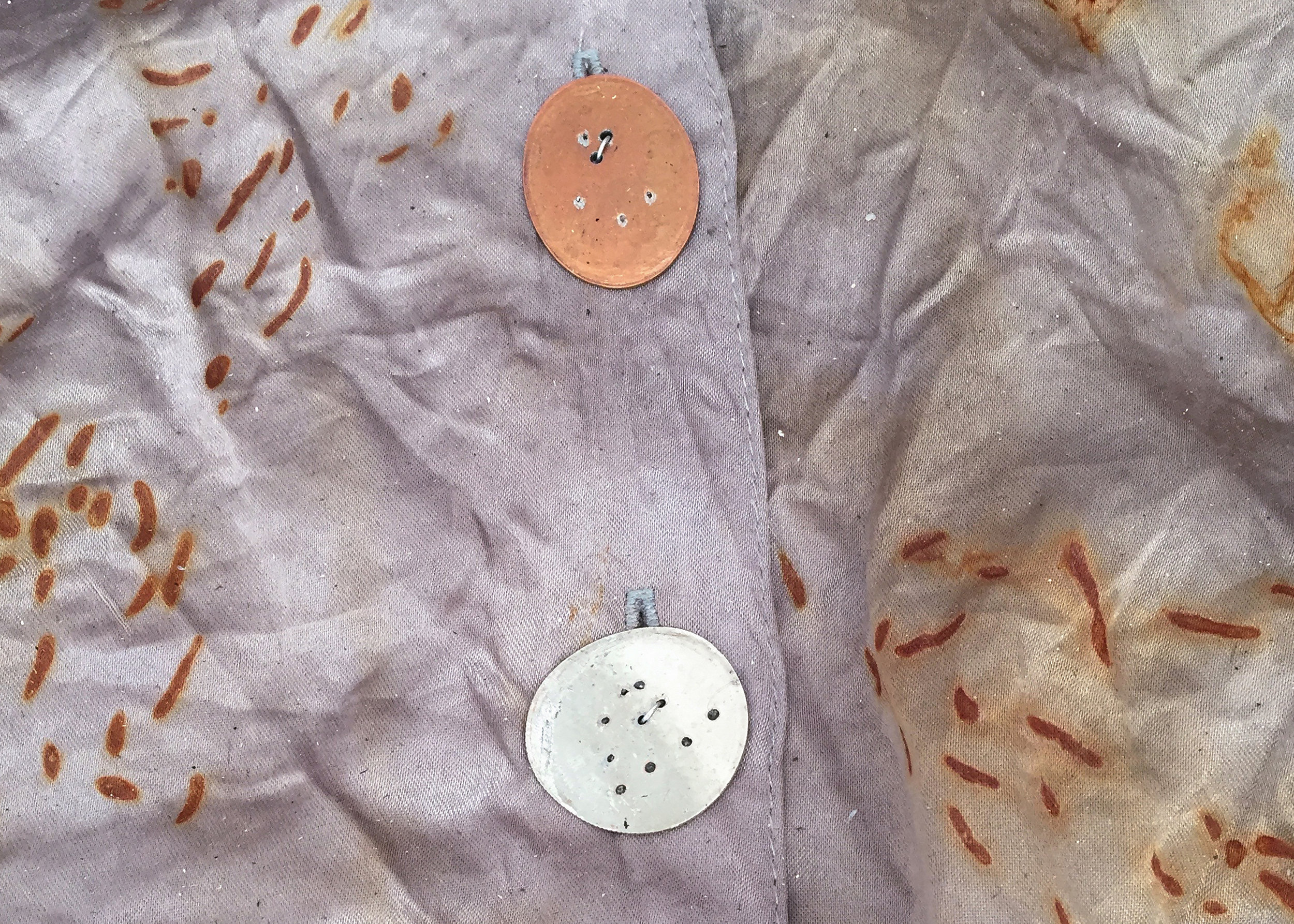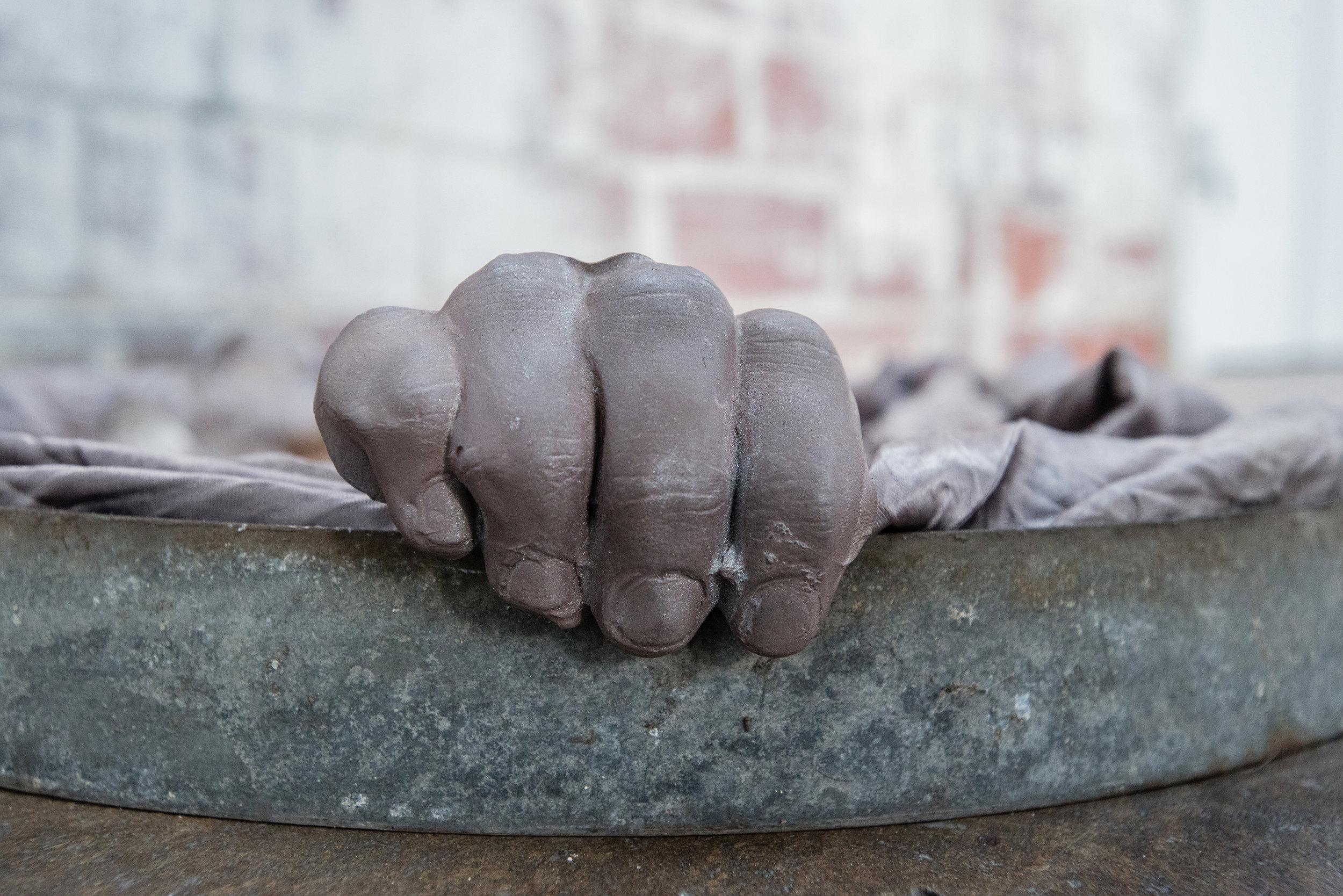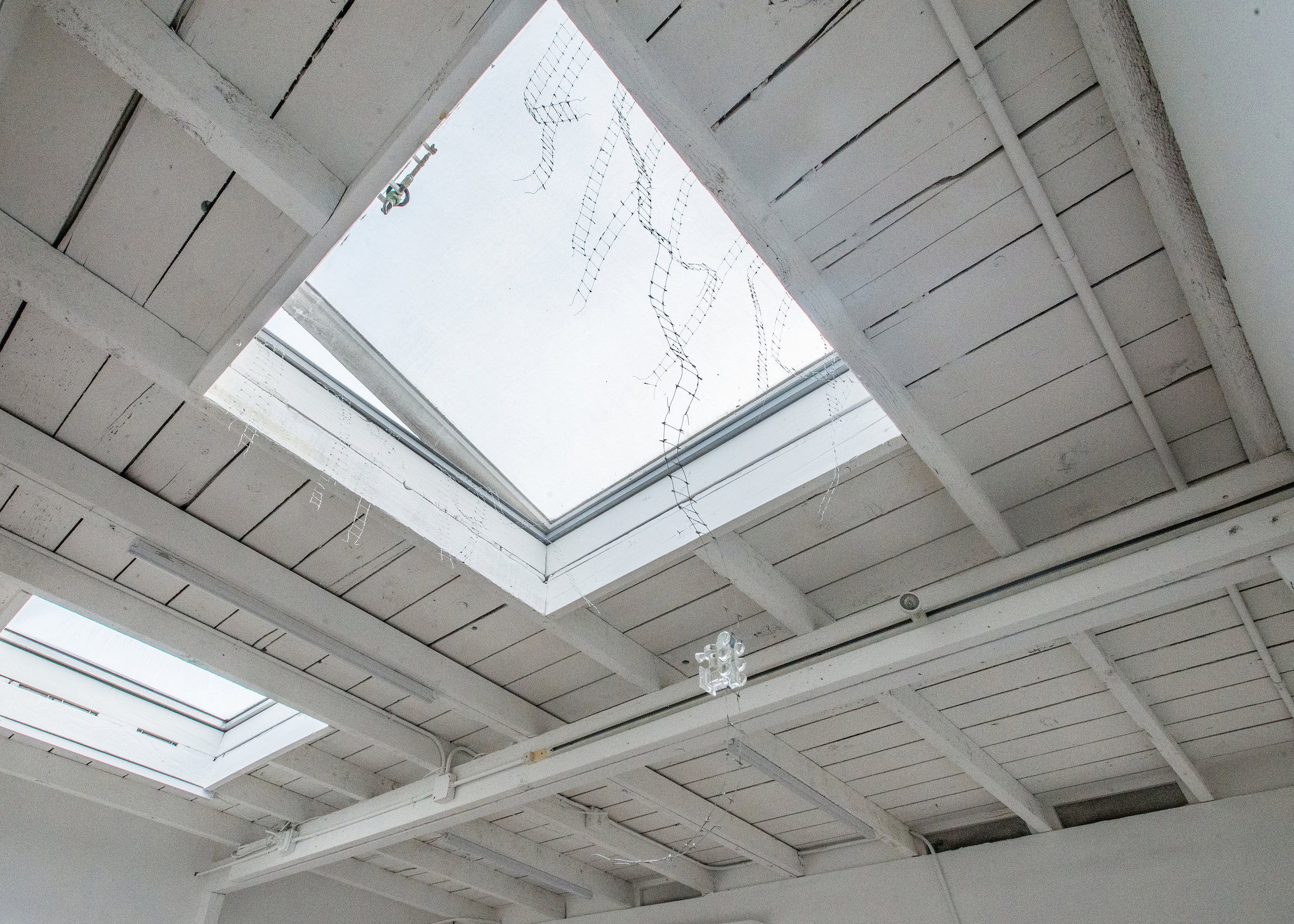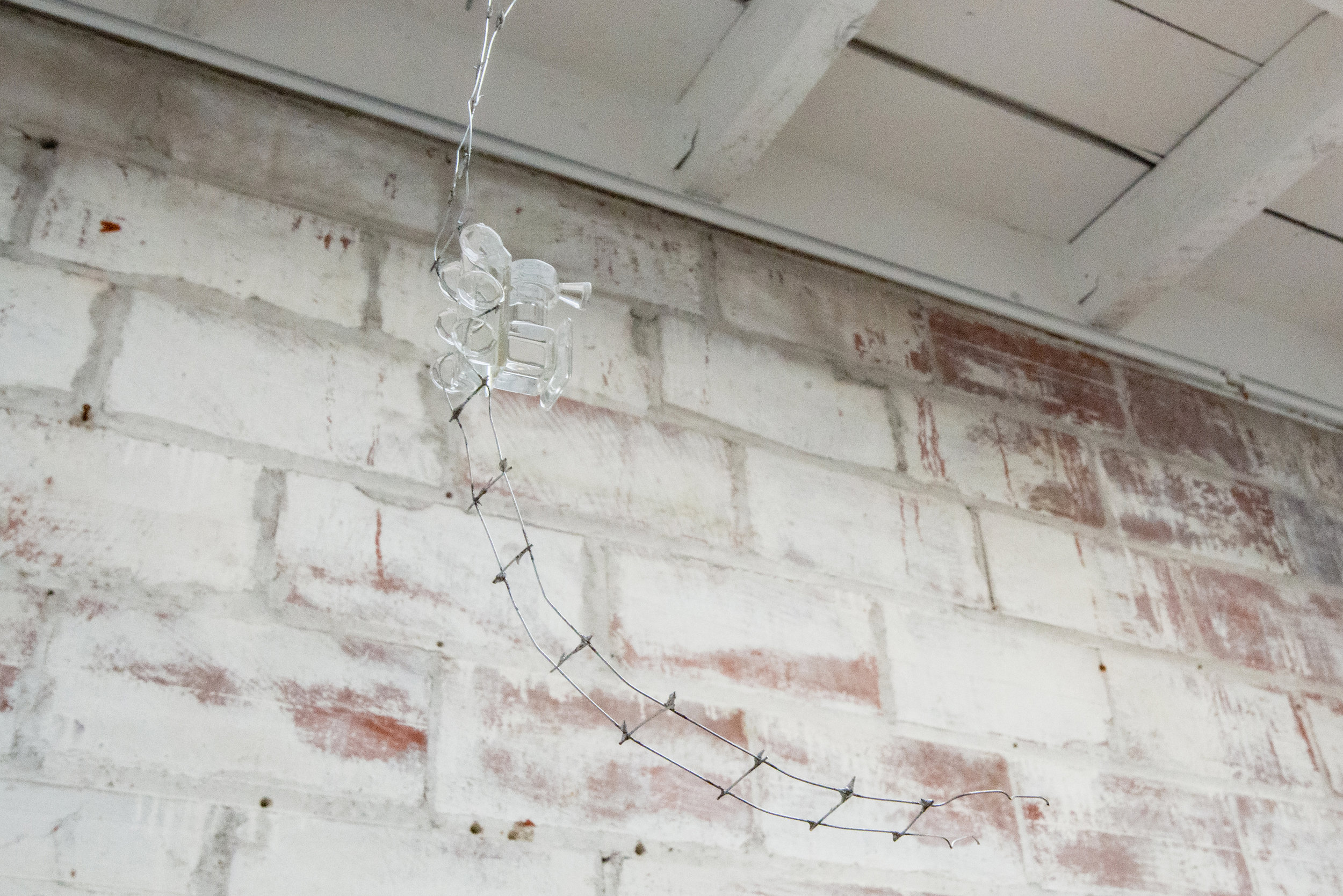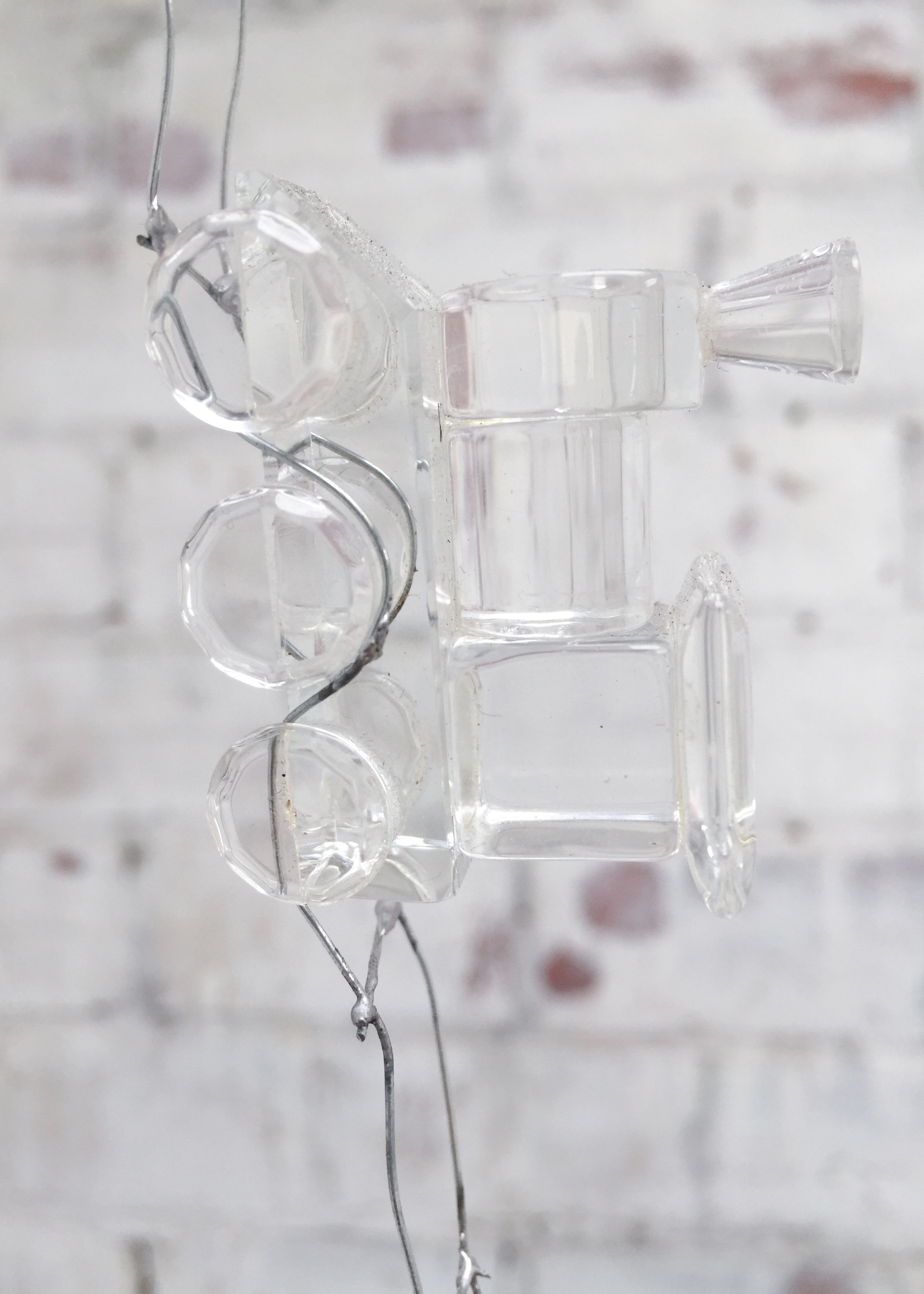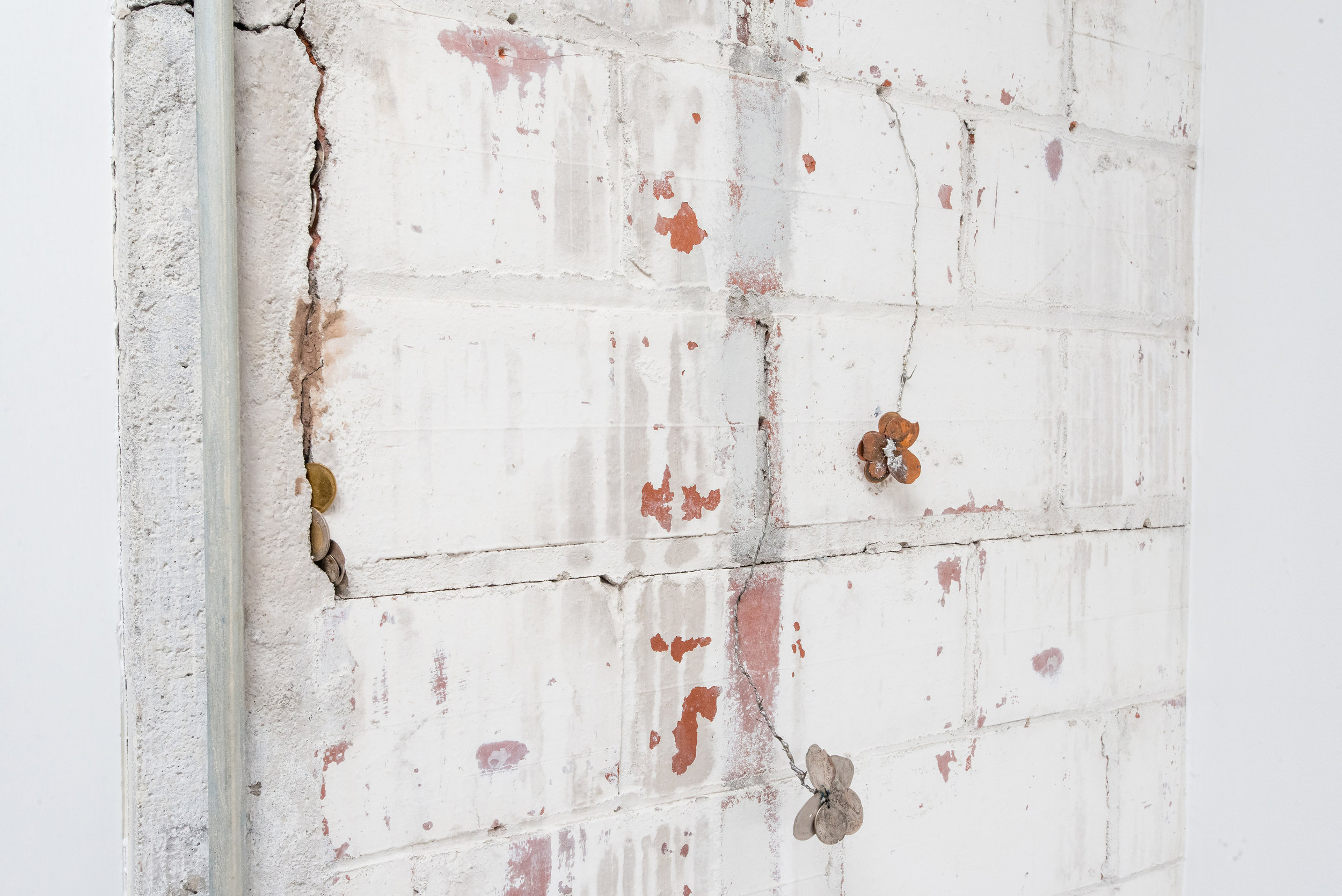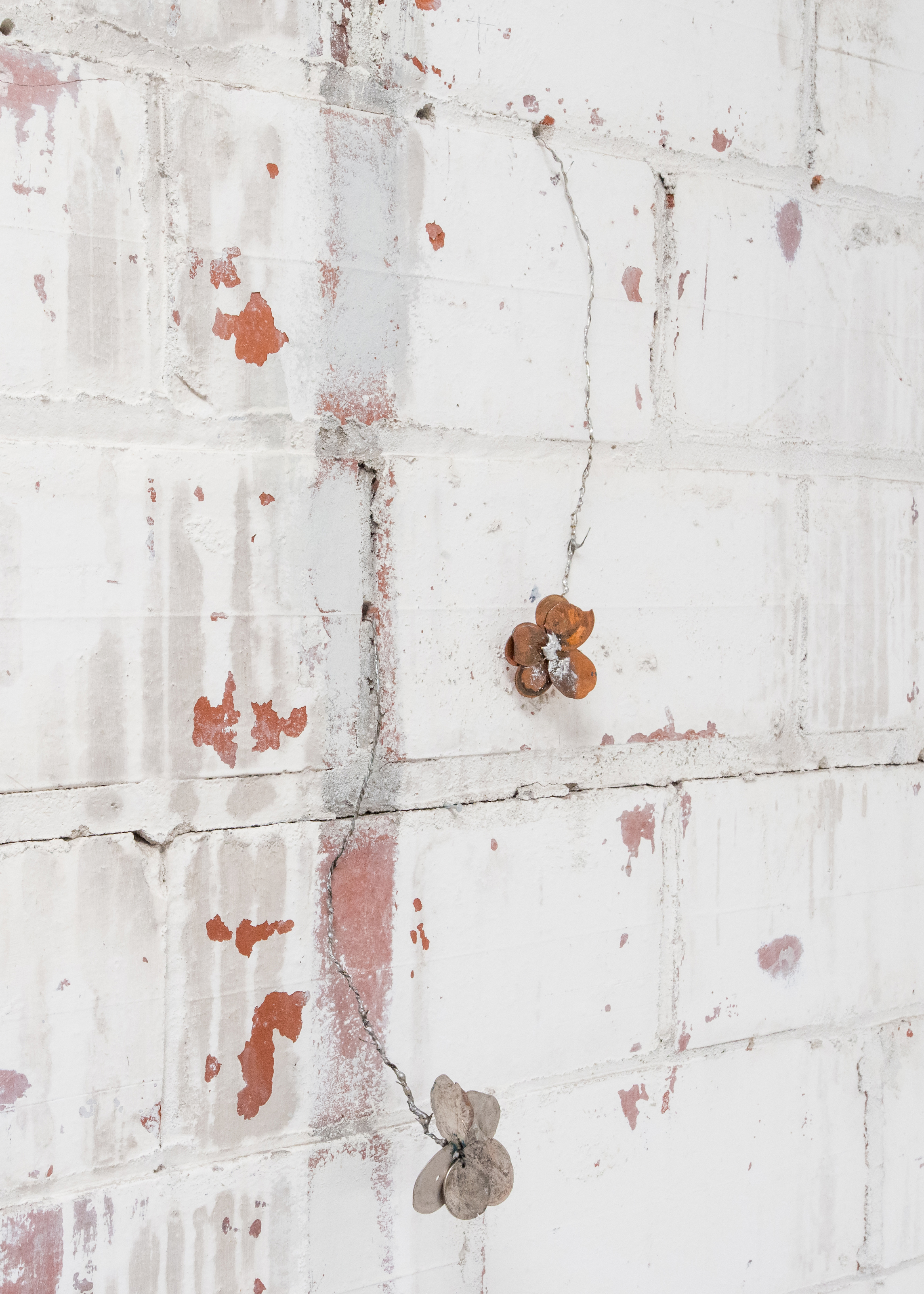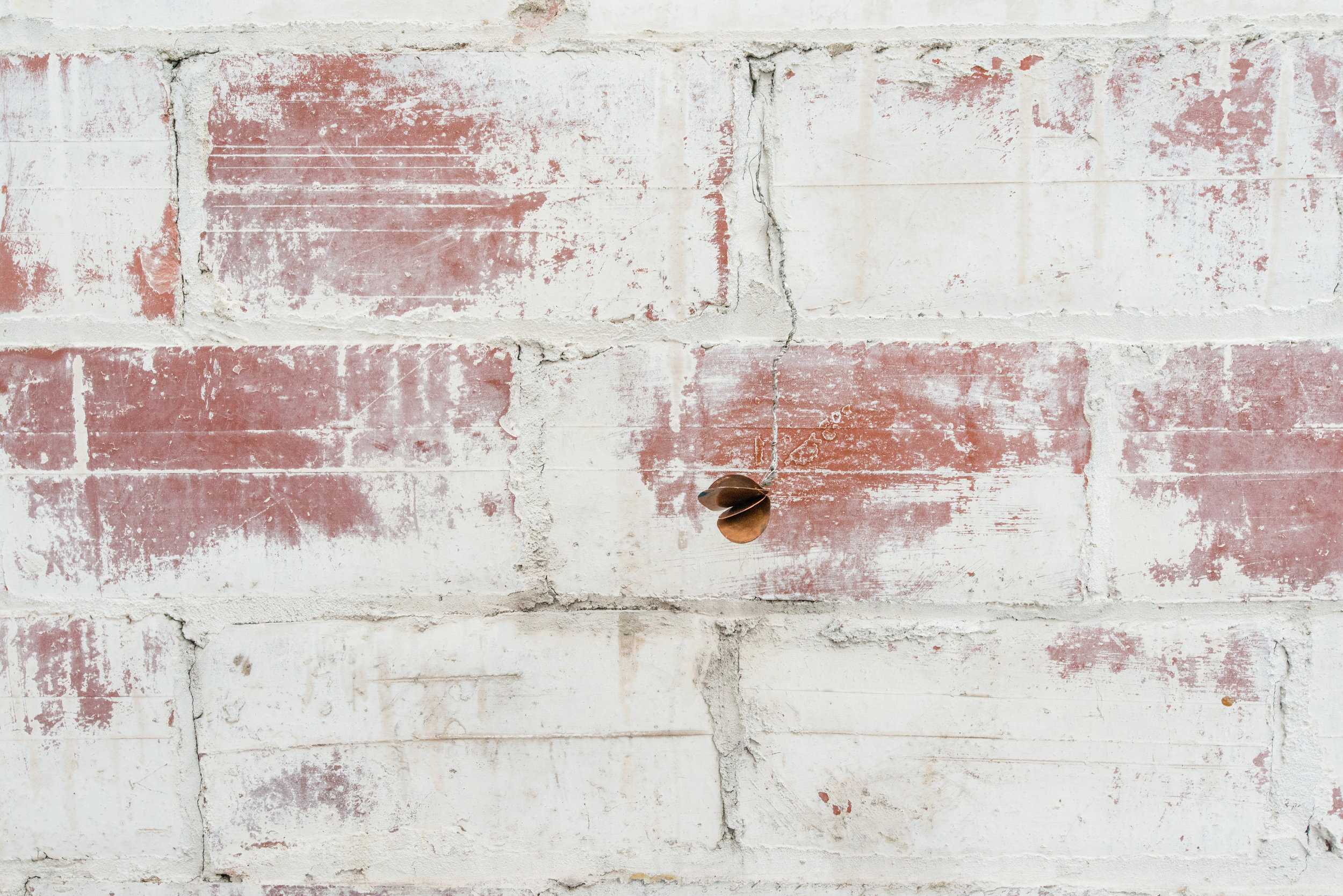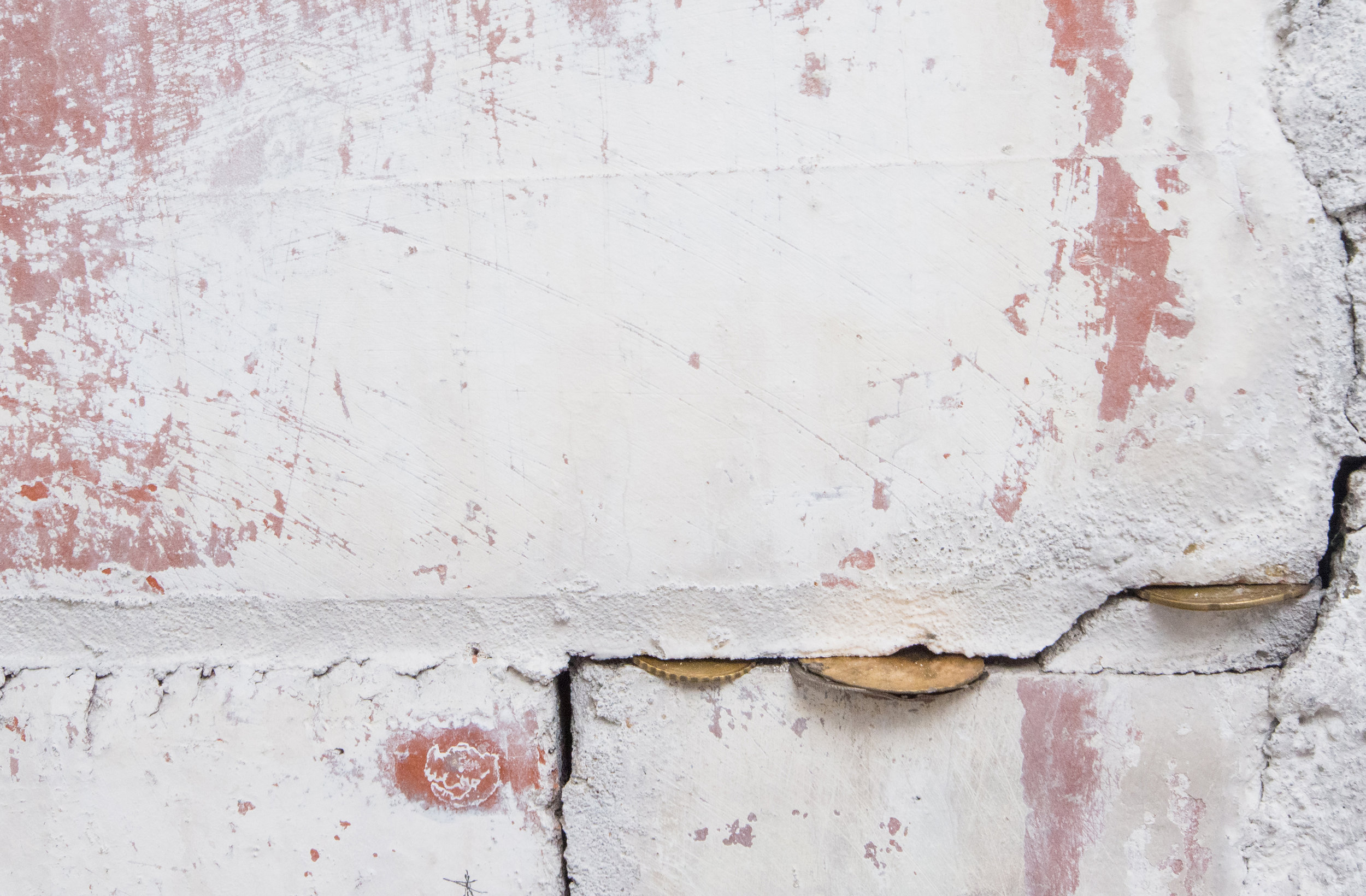a room at the center of the world surrounded by the noise of men
Jenine Marsh
October 26 - December 2, 2018
@
Interface
486 49th Street
Oakland
I press the coins with a machine that cuts through cities and continents like a rusty knife. An unbelievably long and narrow machine-press, it forks and grinds its way across land, unwavering from its stubborn route, locked in steel. The machine is sometimes fenced in with chain-link and barbed wire, sometimes bordered by the blank backsides of warehouses, and sometimes left wide open like an ugly and unhealing scar, dirty, and smelling of train oil and dry grass.
I lay out heavy pocketfuls of coins in a long row along the rail and wait. Sometimes I’ll wait hours, sitting on the slag with a beer and the insects feasting on dandelion and milkweed. The weight will come on slowly with deep underground tones that send me back to the tall grass. The engine comes, huge, with a blast of wind and the incredible cacophony of closed cars rattling like they might shake apart and wheels hammering down on rail joints, screaming metal-on-metal. There is an extra noise when wheels that could cut a truck in two roll over the shallow thickness of dimes and quarters and cents. Endless cars hammer through the strip, and then it passes, taking its noise with it. The crickets come back on and I search the rocks for the scattered and flattened coins, still warm and dirty with train oil.
The ambiguous legality of the trespass, the mis-use of the privately owned machine, and the destruction of legal tender enacted along these weed strips together stretch out an illicit liminality. Destruction makes a space. And although it is narrow, unbelievably thin, is it there. A gap in the fence.
(text adapted from coins and tokens, 2018, Jenine Marsh.)
For her exhibition at Interface, Jenine Marsh presents a new sculptural installation continuing her recent explorations with train-pressed coins. Harnessing the force of these readymade machines, coins of mixed currencies are pressed. Form and value simultaneously deformed, the flattened coins become sculptural materials for Marsh’s work. Marsh considers the flattening and destruction of coins as not only an anti-capitalist gesture, but also as a potentially feminist, transformative one, producing alternative modes of value and exchange that are tactile, embodied and personal.
A new poem by Claudia La Rocco was presented in conjunction with this exhibition and Marsh’s title is drawn from that poem.
This exhibition marks the beginning of a series at Interface pairing its exhibitions with newly commissioned writings by Bay Area writers. The writings and the exhibitions are viewed as entirely independent but are designed to complement one another.
Jenine Marsh is an artist based in Toronto, Canada. Recent exhibitions include Entangled Tales, Rupert (Vilnius), Orientering with Entrée (Bergen), Occupations of Uninhabited Space, Gianni Manhattan (Vienna), How deep is your love?, Cooper Cole (Toronto), feminine marvelous and tough, Lulu (Mexico City), TRUE LIES, Night Gallery (Los Angeles), GUTTERSNIPES, Vie d'ange (Montreal), In a world of weeds, all roses are wild, Beautiful (Chicago), A Change of Heart, Hannah Hoffman Gallery (Los Angeles), and The cut flower still blooms, 8-11 (Toronto). She has participated in residencies at AiR Bergen at USF Verftet (NO), Rupert (LT), the Banff Centre (CA), and Vermont Studio Center (USA). Her work is represented by Cooper Cole in Toronto.
Claudia La Rocco is the author of the selected writings The Best Most Useless Dress (Badlands Unlimited) and the novel petit cadeau (The Chocolate Factory Theater). animals & giraffes, her duo with musician/composer Phillip Greenlief and an ongoing roster of collaborators, has released two albums: July (with various musicians; Edgetone Records) and Landlocked Beach (with Wobbly; Creative Sources). Her poetry and prose have been published in 6X6 #34: I Like Softness (Ugly Duckling Presse), Imagined Theatres: Writing for a theoretical stage (Daniel Sack, ed; Routledge), On Value (Ralph Lemon, ed; Triple Canopy), et al. She has received grants and residencies from the Doris Duke Charitable Foundation, Creative Capital/Warhol Foundation, and Headlands Center for the Arts, among others, and has bylines in numerous publications, including ARTFORUM, BOMB, and The New York Times, where she was a critic from 2005-2015.
Photos by Hasain Rasheed, all images copyright and courtesy of the artist and Interface, Oakland.

